Technology and design
The technology is principally designed to be fully automatic. Dust, germs, algae, limescale, etc. are removed using suitable filters and biocides. For a single water wall, the technology is installed in the water wall basin. Where several water walls are implemented, all technical elements are housed in a separate technical room or technical tank.
The cooling water is circulated. (Depending on the rates of evaporation and condensation, fresh water inflow or outflow will be needed).
Design of the climate fountain
- Wall and collection basin in glass, stainless steel.
- Average water flow: 700 l/h, circulated.
- Average height of the water wall:
2-4 m, area approx. 2-4 m². - Number of water walls needed per project:
1 – 25. - Water preparation and treatment to industrial standards.
- Outdoor unit as desired
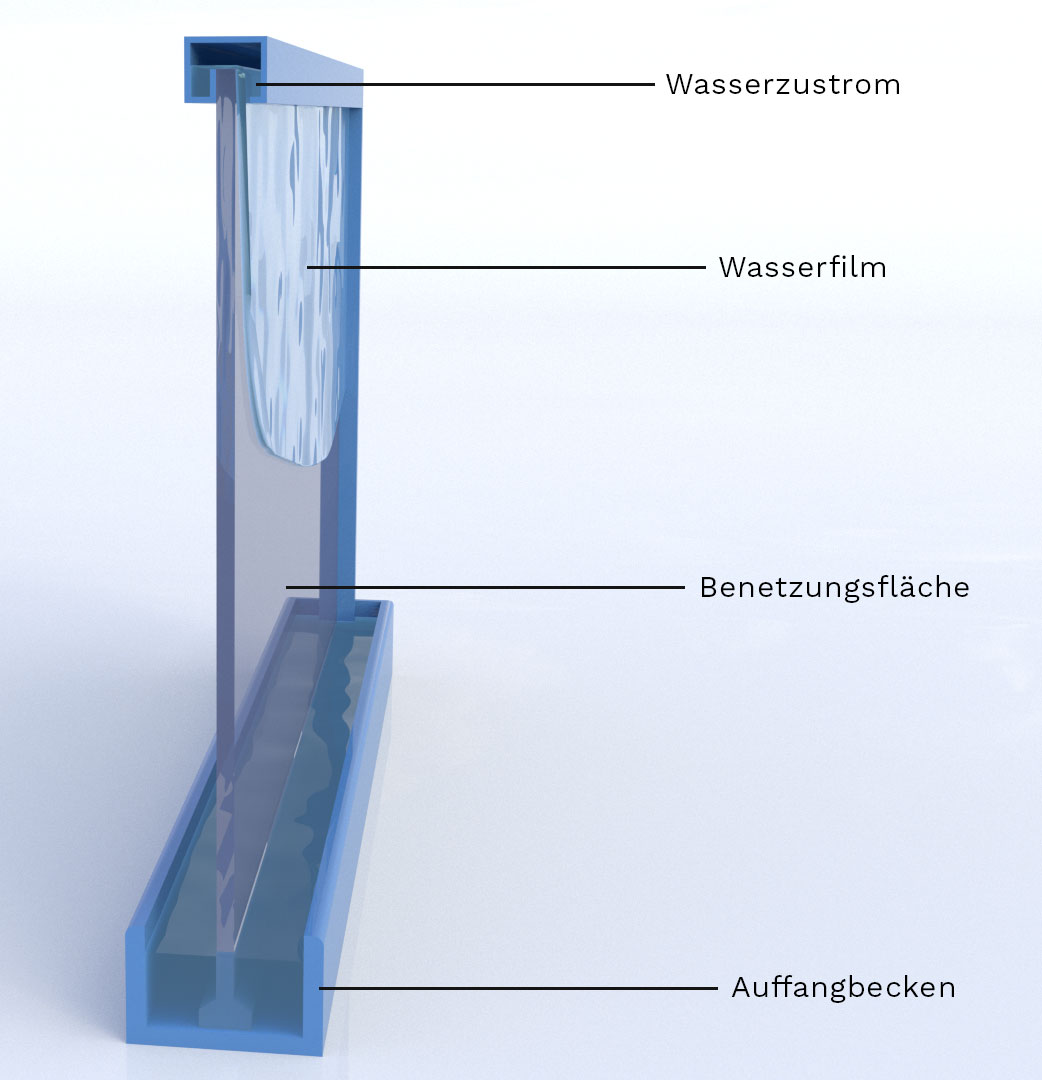
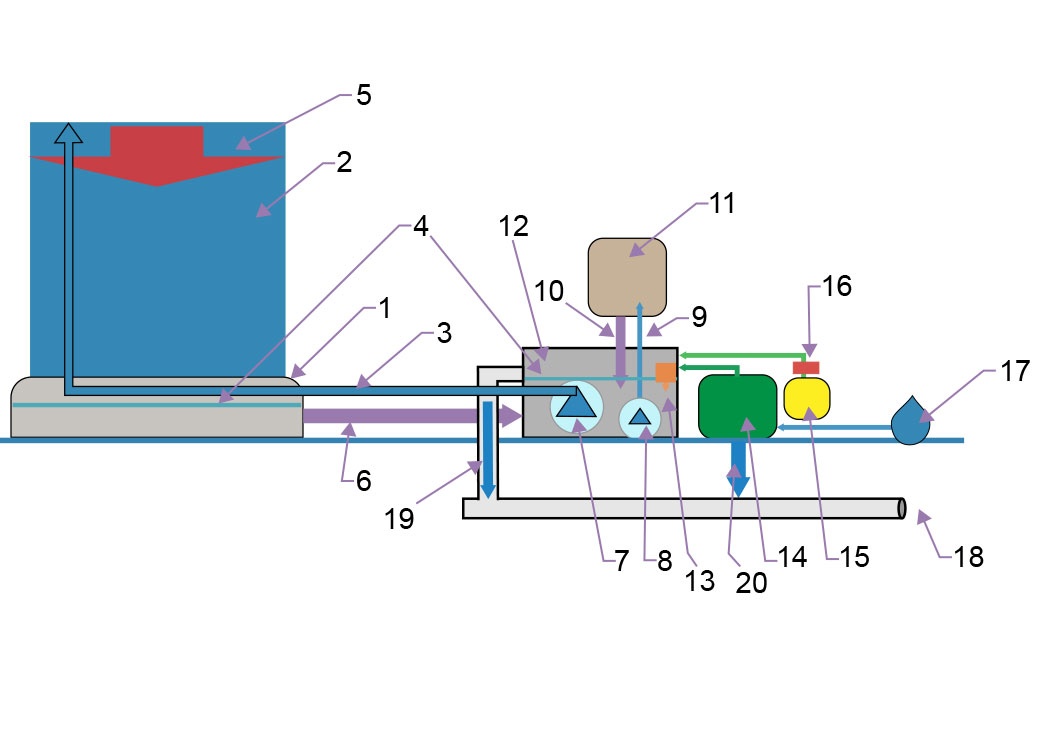
2. Flooded surface
3. Water wall inflow
4. Water level
5. Water film on flooded surface
6. Return flow to technical tank
7. Circulation pump (large) – pumps to water wall
8. Circulation pump (small) – pumps to filter
9. Filter inflow
10. Return flow from filter to technical tank
11. Particle filter
12. Technical tank
13. Float valve
14. Water desalination
15. Canister with water additives to combat limescale, algae and germs
16. Water additive dispenser
17. Fresh water inflow
18. Outflow
19. Technical tank overflow protection
20. Overflow protection
Requirements of the air conditioning system
- Reduction of particles, contaminants and odours
- Avoidance of draughts and asymmetries in the radiation of heat
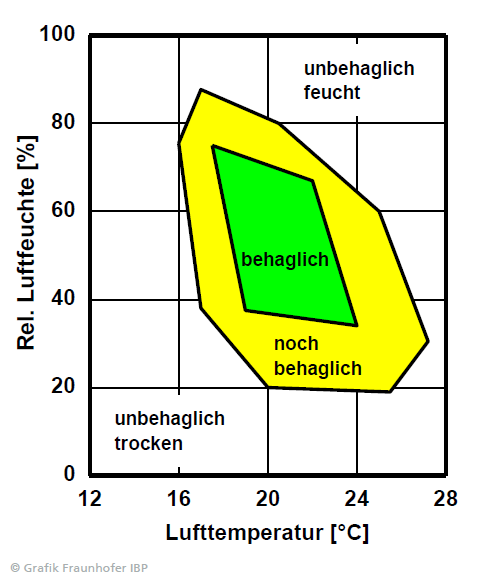
- Germs live longer when the air is very dry
- Excess humidity promotes the growth of mould and mites
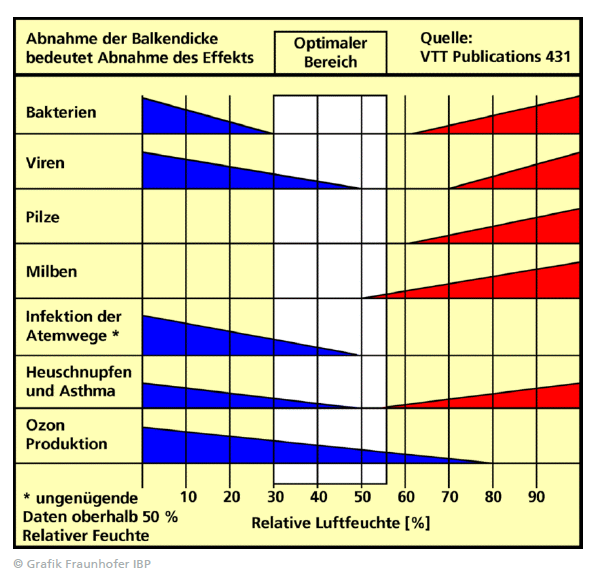
Operating principle: cooling/dehumidification
With cooled water, effective cooling and dehumidification of the ambient air is achieved.
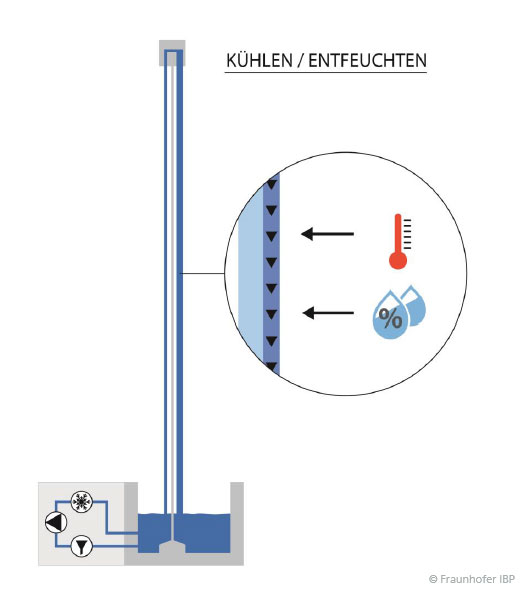
Operating principle:
humidification
Without water cooling, the ambient air is humidified to act against the dryness experienced indoors in winter.
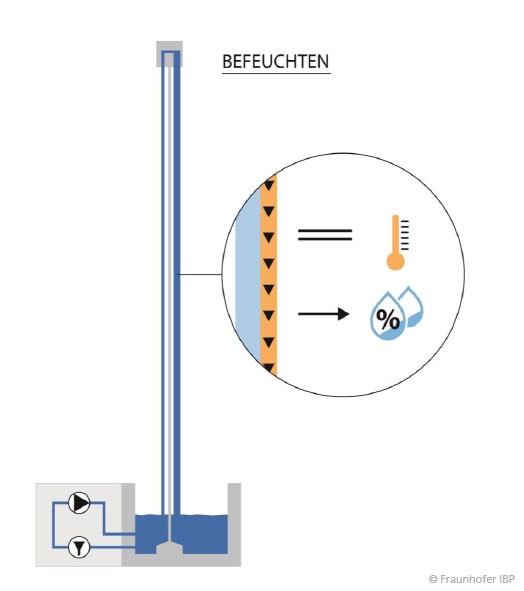
Climate fountain – heat transfer processes
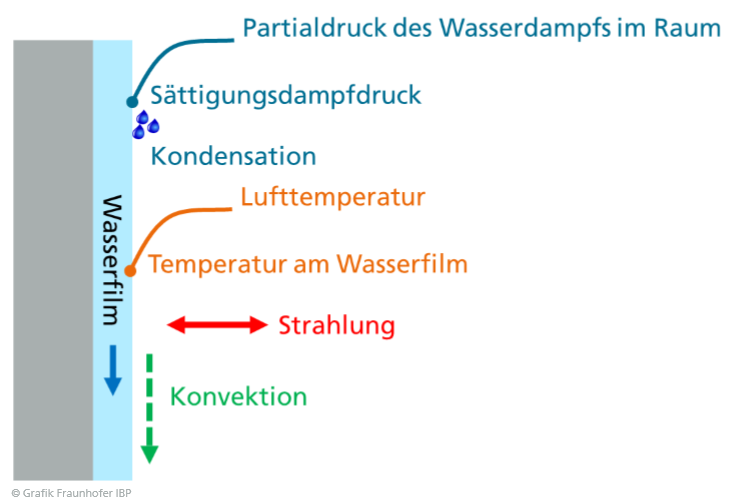
Climate fountain’s mode of action
Water circulates over a vertical panel in the room, forming an even film of liquid across the surface. Without cooling, the water evaporates and humidifies the ambient air. In the winter months, this can markedly improve comfort in dry rooms. In summer, on the other hand, a cooling unit is used to bring the temperature of the water below 10°C. Effective cooling and simultaneous dehumidification of the ambient air is thus achieved through the great difference between air and water temperatures. If the temperature of the water film is below the dew point temperature of the ambient air, the humidity in the air condenses on the water film and is drained away into the collection basin. Excess water flows away via an overflow and can be collected as needed for further use.
